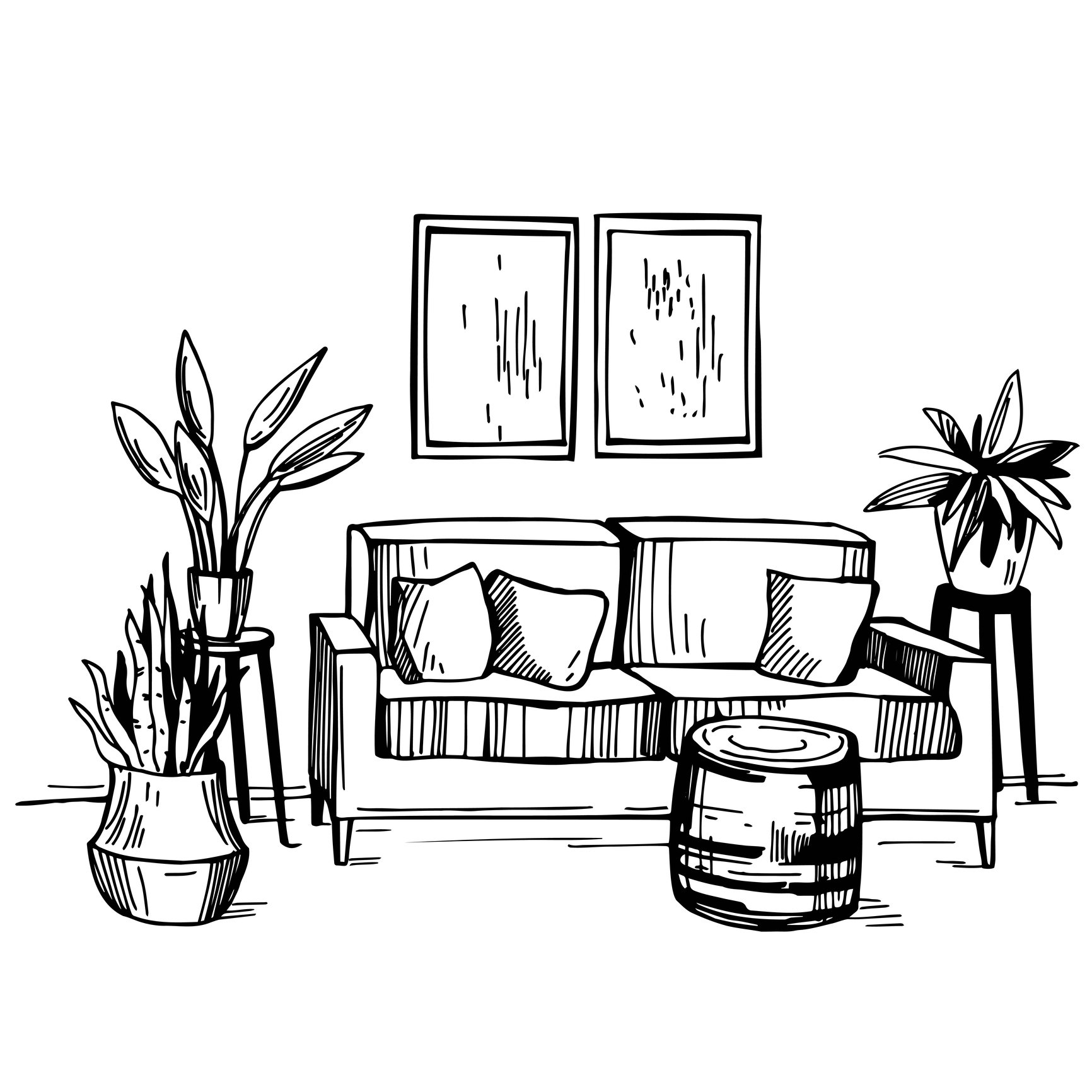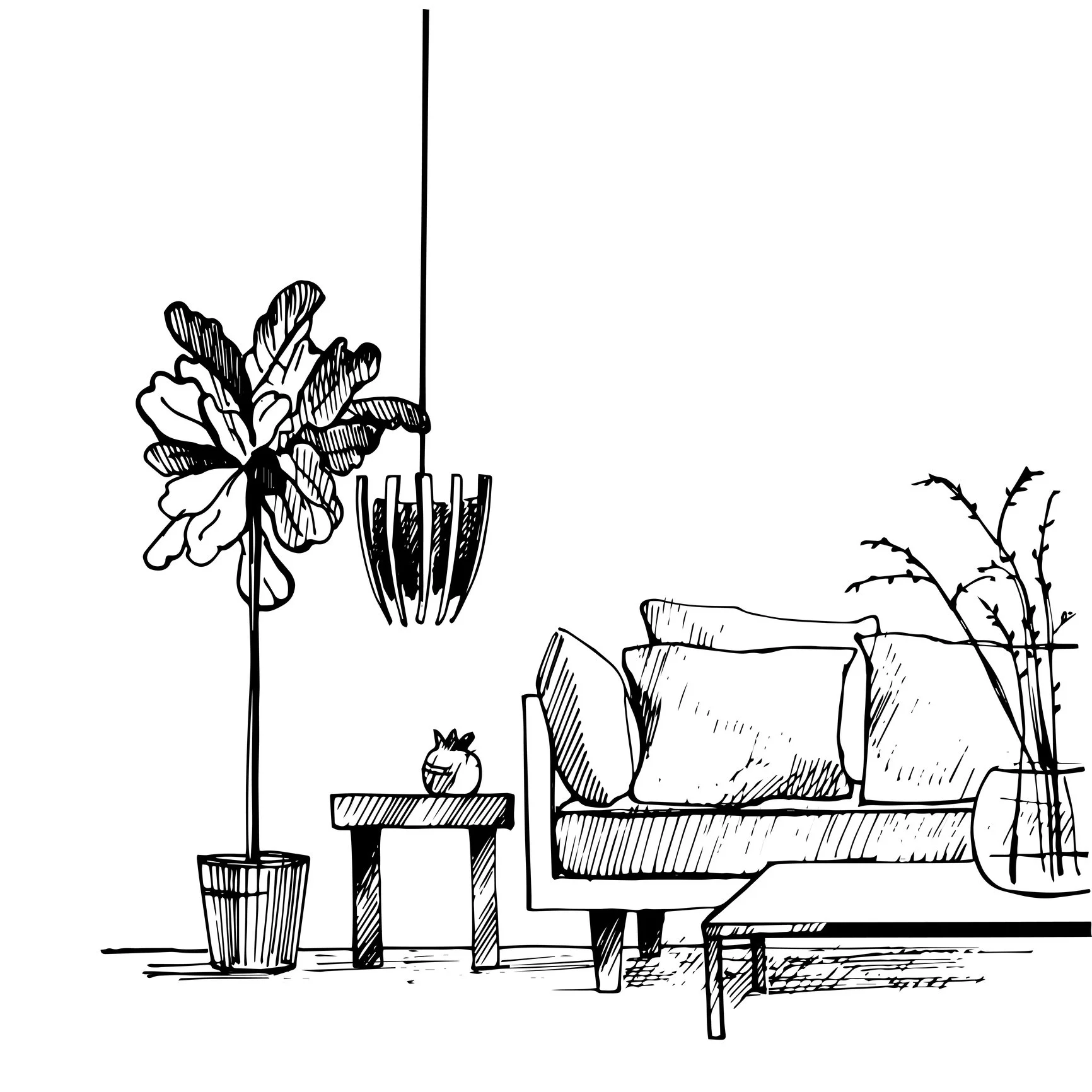5 Ways to Make a Mentally Supportive Space
Home is where your health begins. I’m a self-taught interior designer with a background in public health. I know intimately how your physical environment can impact your mental health. Since March 2020, we’ve become way more cognizant of our home space, but have we taken steps to make our home more supportive of our mental health journeys?
We all want home to be restorative and a safe space, but many of us don’t want to spend a ton of money to do so. These five simple steps will noticeably improve the feeling of your home and they won’t break the bank.
1. Take time to implement a cleaning routine.
This seems so simple, but taking some time to do a deep-clean every few months can drastically improve the feeling of your home. Not only does this get rid of illnesses that thrive on surfaces, but it also refreshes the space. Make a schedule for yourself weekly, monthly, or seasonally of things you need to clean around your house to keep it clean. If creating a schedule for yourself seems daunting, then check out Good Housekeeping’s article for their cleaning schedule.
If you don’t love cleaning, then start small. Pick one room in the house and tackle it from start to finish. Or if you prefer to move more freely through your chores, set a timer and stop when it goes off. I like to listen to stand-up comedy on Spotify while I clean to get a good laugh. Find something that makes it more enjoyable for you. Once the task(s) for the day are done, celebrate your accomplishment.
2. Get yourself a house plant.
I am a glorified plant lady. I love plants and I always get “the look” from my husband when I come home with another one, but then we both laugh because he knows how happy they make me. Not only do plants improve the air quality in your home, but they also have been found to help people slow down and reconnect with nature. There is something about putting your hands in soil or cleaning a plant's leaves that can really cause you to take a deep breath. Caring for another thing whether it is a person or a plant or a dog increases your compassion for others. As I said, I am a plant lady so I take this one step further — all the plants in my house have names. I LOVE naming them. I have cute little copper name plates in each pot with both their scientific name and their given name. For example, Zamioculcas Zamiifolia is the scientific name but his given name is obviously ZZ Top. I get that this is somewhat silly, but I do feel it gives me greater connection to them and it also makes it easier for others to care for my plants too. I’ll just say “water ZZ Top on Monday and Friday” to my husband and he knows exactly what plant needs attention.
Choose plants that work for your lifestyle and your home. Take into account how much energy you want to give your plant. Do you want a low maintenance lady? Then go with a Snake Plant. If you want more of a challenge, then go with a diva like a Fiddle Leaf Fig. How much light does your house get? If you have lots of sunny spots, then the succulent family might be good for you, but if you have low-light then go for a Pothos. I have found that the more I take into account these factors, then the more I enjoy caring for them because they are happy in the environment. This breeds success and confidence.
3. Make your home smell like a happy memory.
I am very scent oriented, my family calls me nosey. I can smell one thing and it takes me back to a time and a place. When I was backpacking through Peru, every house was burning Palo Santo. Now when it burns, I remember the sound of the rain on the stone roofs and the feeling I had during that trip. Scent is a very powerful tool. I would urge you to think back to your happiest moments. Did you love the smell of fresh cut grass on your childhood soccer field? Or do you think back to your wedding and can smell nothing other than roses or peonies? Or do you just love the smell of Banana Boat tanning oil from summer days spent by the pool? Bottle up those moments and bring them into your home. Find a candle or an essential oil that brings back those memories. Even if it is subtle, when you connect with those happy moments this will change your state of mind.
4. Create a space for your joy.
This is one of my absolute favorite things to incorporate for clients with interior design — spaces of joy. I’ll always start a project by getting to know the person and what makes them jump up and down for joy. Do they love crafts, or yoga, or coffee, or old vinyl records? Whatever their passion is, there needs to be a space for that in their home — no matter how small. Now, more than ever before, there is a new focus on making interior spaces suit the homeowner or renter. Your home should not look like a catalog — it should be a reflection of you. It should be full of treasures that make you happy and inspire you. So how can you add that little bit of happiness into your home? For me, I love murals. I love looking at them and having the feeling of looking into another world through a wall. We have four murals in our house and counting. But you don’t have to go so grand koi, I know having murals in your home is kind-of over the top. Is there a way to add a tea bar into a corner in your kitchen? Or a place for your cello surrounded by vintage sheet music? I promise that if you add in the little details of things you love into your home, then every time you enter your space you will feel supported and nurtured.
5. Declutter and organize your whole house.
Clutter creates stress. Read that sentence again. When things don’t have a place or your day is made harder because of lack of organization, this can impact your mental health. When your home is organized then this leaves you with more space physically and mentally. Decluttering can seem overwhelming but start small and in one space — maybe with that junk drawer in your kitchen. Ask yourself do you really need five slotted spoons? Can you reduce it to one or two? Going through one drawer a day or a closet on a weekend will give you satisfaction from being able to accomplish a small task and you will feel lighter having fewer physical things.
Organizing can also feel daunting. But to make things more simple, group like with like. Add in boxes and bins to group these things together. If you like to, then label so everyone in your home knows where these new items live. Defining spaces gives everyone the power to stay organized and put things away. For my son, I have baskets for all of his toys. Not only is it aesthetically pleasing for me, but he knows what things go in what basket. It empowers him to find his toys and put them away.
Creating mental space takes effort and intention. Your home should be a reflection of you and should not cause you any additional stress — there is enough stress outside of your home. I hope you can implement some of these things into your home so that your home supports you and your mental health. I think you’ll find that this practice of deliberately editing your space will give you a deep sense of calm.


